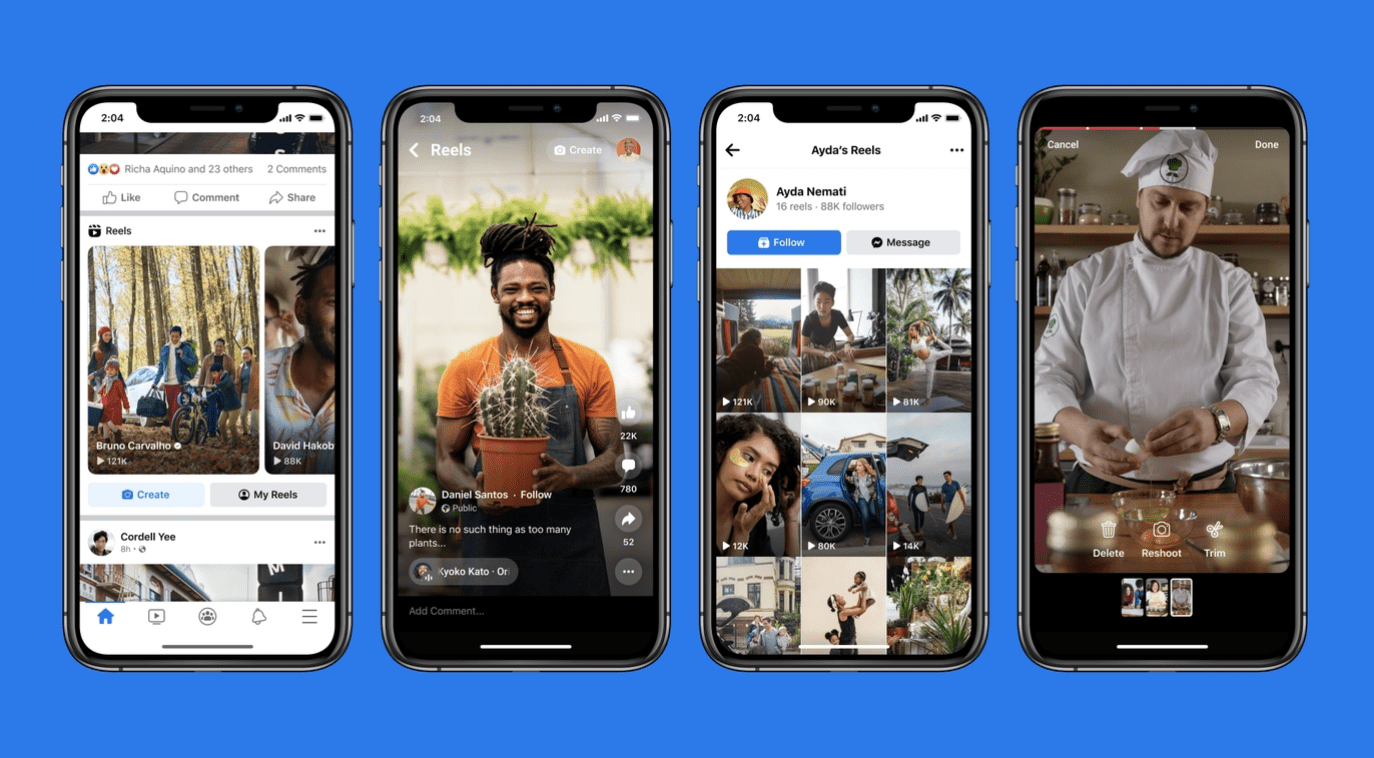One year after Instagram announced the debut of short-form video feature Instagram Reels, parent company Facebook is joining the party. Reels first debuted on Instagram in 2020 in a clear bid to compete with TikTok. Facebook, having recently announced its plans to test Facebook Reels in the United States, is now figuring out ways to make Reels a more popular feature on Facebook itself (the U.S. initiative is an expansion of testing already launched in Mexico, Canada, and India). As part of the test, Instagram users can cross-post their reels to Facebook.
What do these developments mean for your brand? Read on to learn more.
What Is the Reels Feature?
When Reels rolled out on Instagram in 2020, the video time cap was 15 seconds, but the feature has since grown, and grown again: videos can now be up to one minute long. Using Facebook Reels, people can watch others’ videos, as well as create/share their own reels from the Facebook app. The feature’s reason for being? To allow people to “express themselves, discover entertaining content, and to help creators broaden their reach.” According to Facebook, almost half of time spent on the app is devoted to watching videos. Pair this data with the statement that Reels is growing “especially quickly,” and the test run of Facebook Reels makes a tremendous amount of sense. As CEO Mark Zuckerberg told investors, “We’re very focused on making it easy for anyone to create video, and then for those videos to be viewed across all of our different services, starting with Facebook and Instagram first.”
As Zuckerberg implies, emphasis is on creativity and its possibilities. Facebook Reels users have access to creation tools much like those already available on Instagram: video capture, for example, as well as camera roll import, timed text, and music selection. Editing tools allow people to speed up or slow down their video, and to incorporate augmented reality effects from Facebook or third-party developers. And after creating a reel, users can decide how to share it: with select friends, or the default share, which is the general public. As is the case throughout Facebook, Reels will be recommended to people based on their interests, who they engage with, and what’s trending as popular.
Why This News Matters
Facebook’s efforts speak to deeper trends and resonances. For one thing, the news demonstrates the tremendous sway TikTok holds in the social world. TikTok enjoys approximately one billion monthly active users. Sixty percent of TikTok users hail from Gen Z, soon to become the largest generation. Furthermore, TikTok users of all ages have proven themselves to be ardent fans, spending an average of 52 minutes per day in the platform and opening the app roughly 8 times per day. Eighty-three percent of TikTok users have posted a video. Facebook understands and respects these stats, and is responding accordingly.
The news also underlines the growing importance of video. As noted above, video accounts for a major chunk of time spent on Facebook. And on Facebook’s latest earnings call, Zuckerberg pointed to Reels as “the largest contributor to engagement growth on Instagram.” In short, videos are hot.
Reels represent a possible advertising opportunity. While Facebook told TechCrunch that Reels on Facebook don’t currently include ads, the plan is “to roll out ads in the future.” Instagram, which has already begun to monetize Reels through ads, is showing what that might look like for Facebook down the road.
Finally, Facebook’s actions underscore the growing influence of individual creators. Consider the fact that in July, the social networking behemoth announced a plan to invest more than $1 billion in creators across both Facebook and Instagram through 2022. The platform’s willingness to shell out that kind of cash speaks to a fundamental belief in influencers’ power.
What Brands Should Do
What do these developments mean for brands? We recommend that you:
- Embrace video, especially short-form video. Facebook is certainly demonstrating its commitment to the form. And as we blogged earlier this year, apps such as YouTube are launching short-form video options such as YouTube Shorts.
- Look for advertising opportunities. Reels may not include ads on Facebook yet, but as noted above, the landscape is constantly evolving. What opportunities for advertising on video features exist today?
- Understand that influencers hold a lot of sway. Consider how you might partner with individual creators to do influencer outreach for your brand.
Contact True Interactive
Pondering the role video might play in your brand’s strategic plan? Contact us. We can advise.
